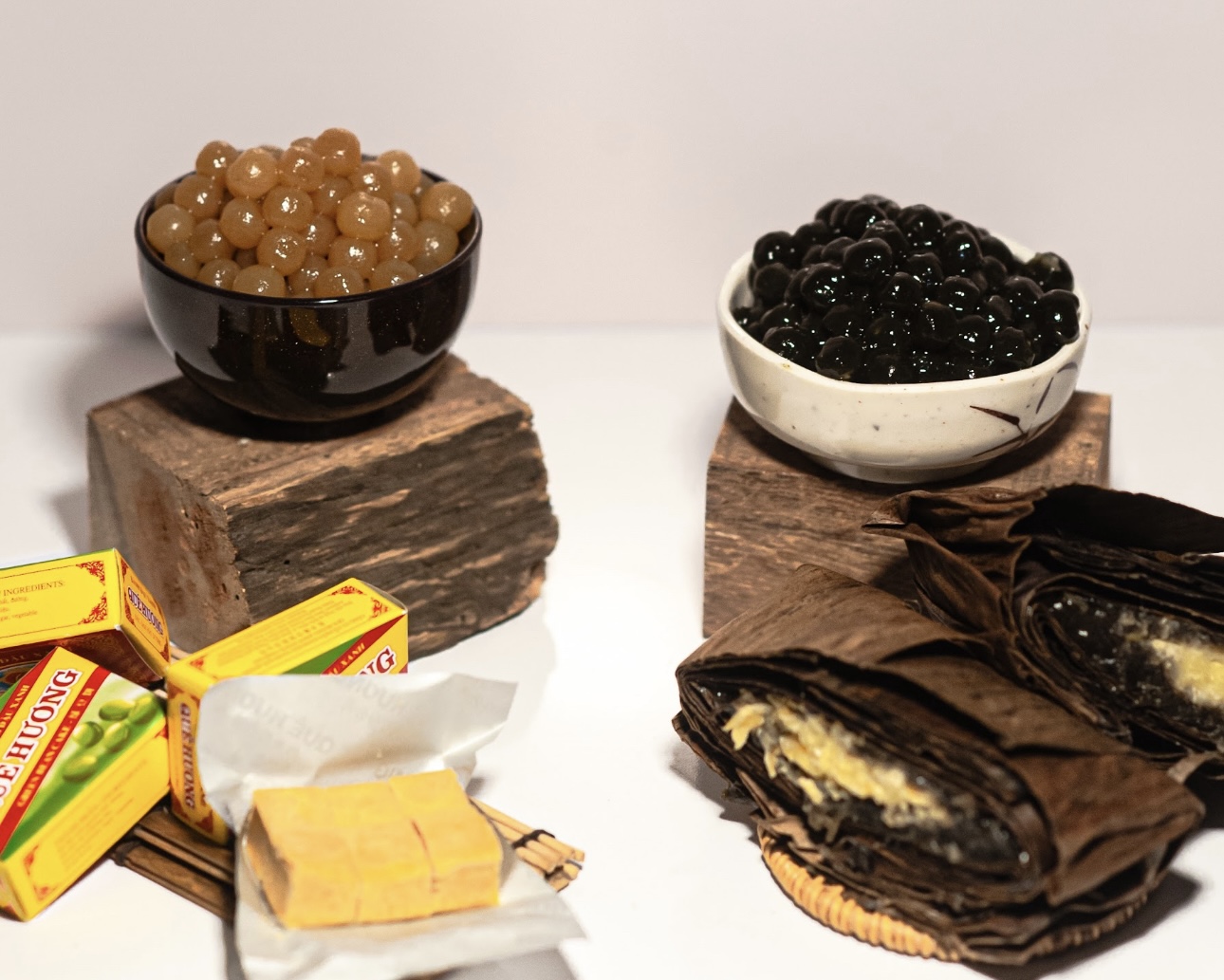Banh gai is a famous local delicacy of Ninh Giang district, Hai Duong province with a characteristic black color, filled with green beans, fresh coconut, fatty meat and wrapped in dried banana leaves. Few people think that banh gai can be served with milk tea, with a strange yet familiar appearance: pearls.
Vu Van Dong (born in 1995, Hai Duong) has spent a month researching the recipe for Banh Gai pearls, but is still worried that consumers will have difficulty accepting this new creation.
With more than 2 years of experience in the culinary field, applying Japanese culture from his study abroad days to business, Mr. Dong has successfully brought world coffee closer to consumers. However, he still does not feel satisfied with what he has done. This 9x boss always has a burning desire to tell stories about his hometown's specialties in a new way.

In January 2024, Dong and his colleagues launched a green bean milk oolong product combined with green bean pearls with the idea originating from green bean cake - another specialty of Hai Duong. In September 2024, Dong's CHU Kafe team continued to create gai cake pearls.
He shared: "I was inspired by a friend who also runs a coffee shop for these two pearl dishes, which are specialties of my hometown. I kept thinking about what kind of cakes I had in my hometown and how to apply them...".
When mentioning Hai Duong, tourists certainly remember green bean cakes. Mr. Don bought the cake flour and researched the recipe with his colleagues. Luckily, on the first try, the product research team immediately launched green bean oolong tea combined with green bean pearls.
However, the green bean ingredient seems to be not too strange to diners in other modern drinks when combined with coffee and milk tea. After that, the group decided to continue trying with gai cake flour.
This second challenge, Dong’s team had a harder time with the new ingredients. The sticky rice flour was ground from dried sticky rice leaves but was not flexible, did not have cohesion, and broke easily when shaped into strands or balls. When tested with fresh pressed coconut, the sticky rice pearls gave a different texture than expected.



The group spent a month constantly changing the recipe and also went to a large banh gai factory in Ninh Giang district to ask for advice from "seniors" in the profession. For the traditional banh gai, the ingredients include: sticky rice flour, galangal leaf flour, molasses, sugar, green beans, and coconut pulp. As for the pearl banh gai, the creative recipe "cut down" the traditional ingredients, leaving only: galangal leaf flour, fresh pressed coconut, pearl powder, and tapioca starch.
"In this test, we were only successful with tapioca pearls. Because the tapioca pearl powder is harder to dissolve than the green bean pearl powder, it leaves a stringy residue in the mouth, and the taste is quite flat and difficult to drink, so we could not launch a drink combined with tapioca pearls like last time. But, fortunately, with an old ingredient that has been re-created like the tapioca pearl cake, the feedback we received was much better.
There are days when we cook up to 5kg of tapioca pearls, while before that, green bean tapioca pearls were only sold for about 2-3kg. Many customers in Hanoi even buy tapioca pearls to take away. In the near future, we plan to research tapioca pearls from gac cake - another specialty of Hai Duong," Dong happily expressed.







